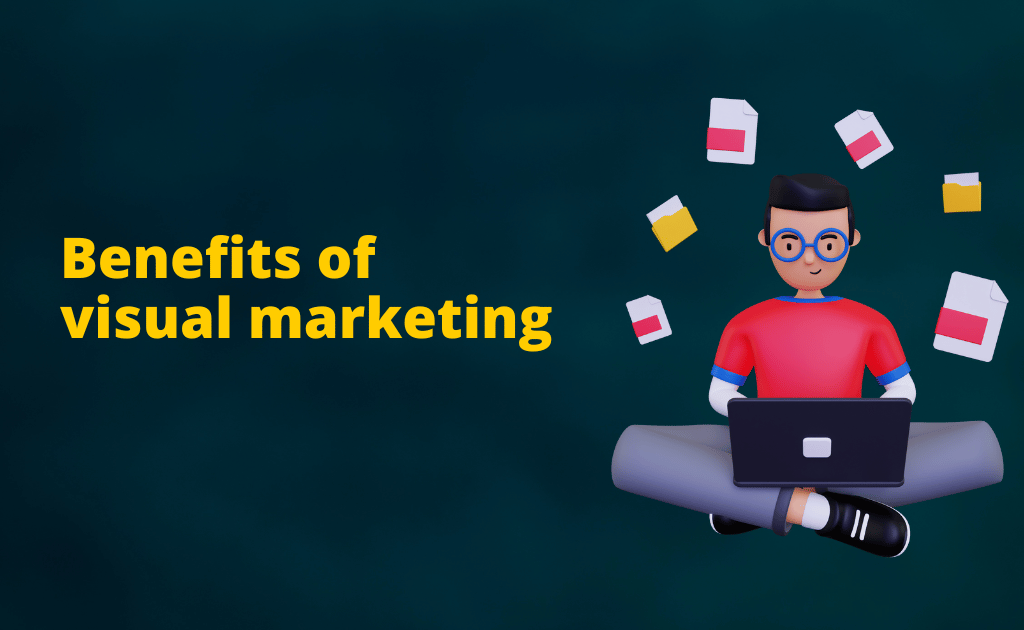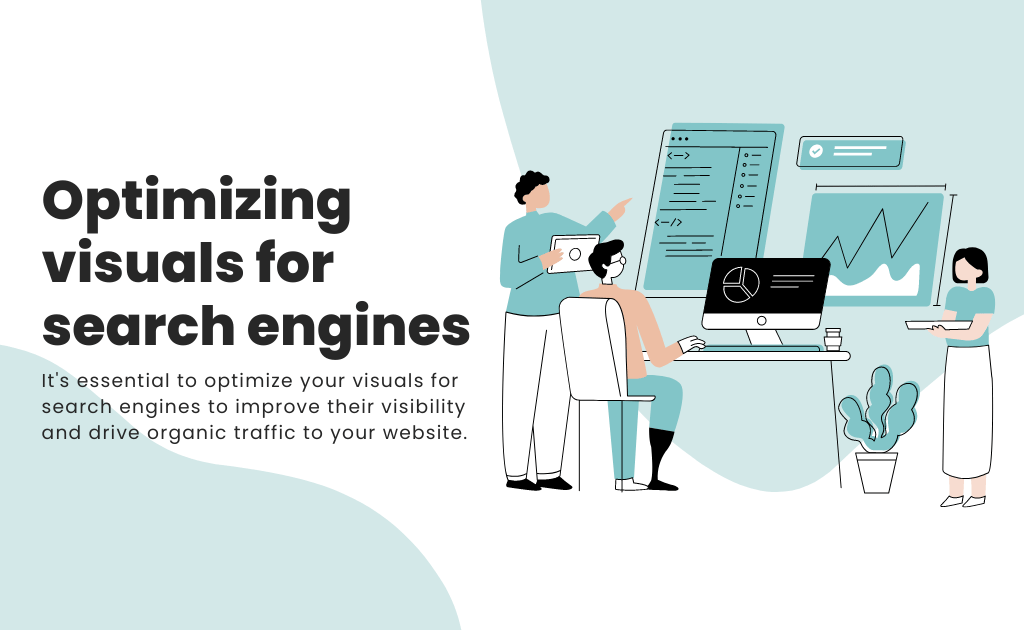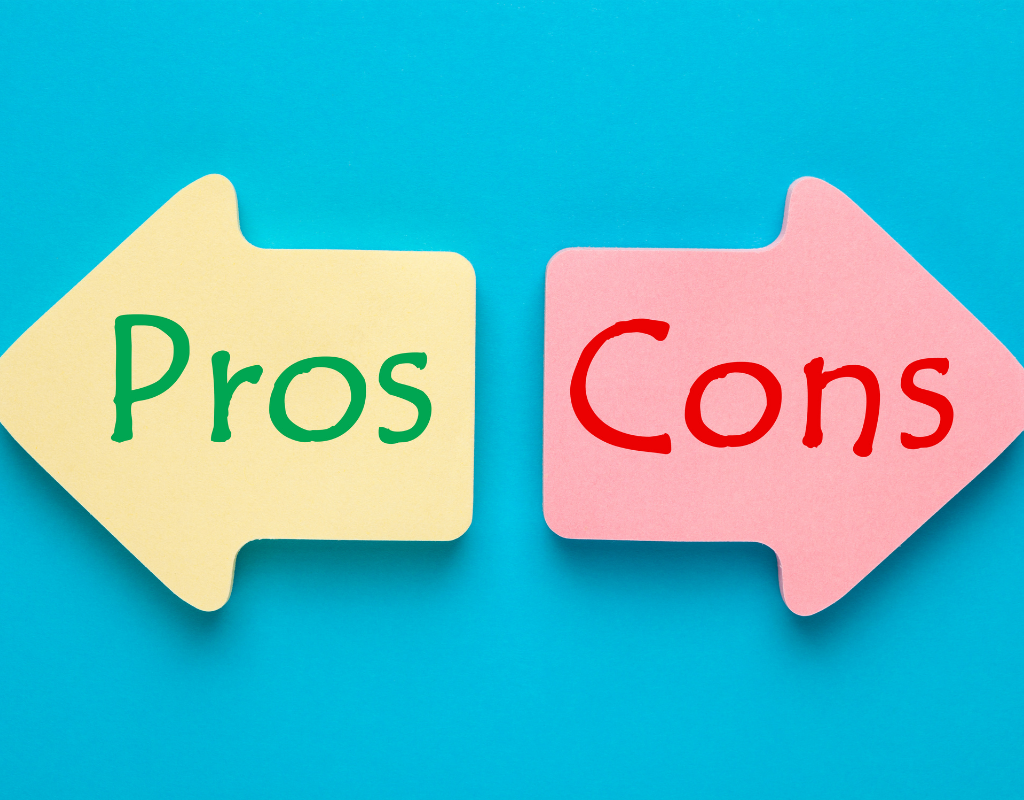In today’s fast-paced digital landscape, capturing your audience’s attention is no easy task. Visual marketing offers a dynamic solution, utilizing captivating images and videos to convey messages and evoke emotions. To optimize your campaigns and make a lasting impact, this article will guide you through the art of visual marketing, providing practical strategies to engage your audience, drive conversions, and stand out from the competition. Discover how to harness the power of visuals and unlock the potential of your marketing campaigns in this exciting journey of visual storytelling.
Table of Contents
Understanding the power of visual marketing
Visual marketing holds a remarkable ability to captivate audiences and communicate messages in a way that few other mediums can achieve. In a world bombarded with information and stimuli, visuals have become the driving force behind grabbing attention and leaving a lasting impression. Whether it’s a stunning photograph, an eye-catching infographic, or a well-crafted video, visuals have the unique power to draw people in instantly, enticing them to explore further.
Beyond their attention-grabbing nature, visuals have a remarkable capacity to convey complex messages concisely and in an impactful manner. With just a glance, a well-crafted image can tell a story, evoke emotions, and even inspire action. Visuals possess the ability to transcend language barriers and resonate with diverse audiences, making them an invaluable tool for brands to connect with their target market on a deeper, more emotional level.
Benefits of visual marketing in increasing engagement and conversions

The benefits of visual marketing extend far beyond mere aesthetics. When implemented effectively, visual marketing can significantly boost engagement and drive conversions. Studies have shown that posts with compelling visuals receive higher levels of engagement on social media platforms compared to text-only content. Visuals evoke emotions, making them more memorable and shareable, thereby increasing the likelihood of users interacting with the content and spreading the message further.
Furthermore, visual marketing enhances the overall user experience, making it more enjoyable and immersive. It allows brands to showcase their products or services in action, enabling potential customers to visualize themselves using or benefiting from what is being offered. This heightened sense of connection and understanding can lead to increased trust, which drives conversions and ultimately contributes to the growth and success of a business.
Defining your target audience
In the world of visual marketing, one size does not fit all. To create resonating visuals, start by defining and understanding your target audience. By identifying the specific characteristics, preferences, and behaviors, you can tailor your visuals in a way that speaks directly to them.
To begin, conduct thorough market research to gain insights into the demographics of your target audience. Consider factors such as age, gender, location, and socioeconomic background. Additionally, delve into their psychographics, including their values, interests, aspirations, and pain points. By building a comprehensive profile of your audience, you can develop a deep understanding of who they are and what motivates them.
Once you have a clear picture of your target audience, it’s time to create visuals that align with their interests and aspirations. Think about the types of visuals that appeal to their aesthetic preferences and resonate with their values. Consider the colors, fonts, and imagery that would evoke the desired emotions and capture their attention. By tailoring your visuals specifically to your audience, you can create a powerful connection that sparks engagement and drives them to take action. Remember, the key is understanding your audience’s unique characteristics and preferences and then craft visuals that speak directly to them, making them feel seen, understood, and inspired.
Crafting compelling visuals
In visual marketing, crafting compelling visuals is essential to capturing and retaining audience attention. It begins with selecting color schemes, fonts, and imagery that align with your brand identity and resonate with your target audience. Colors evoke specific emotions and can convey messages subtly, so choose a color palette that reflects the mood and personality of your brand. Fonts also play a crucial role in visual communication, as they contribute to the overall tone and readability of your content. Select fonts that are legible, consistent, and reflect the essence of your brand’s voice.
Composition
Creating visually stunning designs is not limited to selecting colors and fonts alone. It extends to the composition, layout, and imagery you employ. Balance and hierarchy are key aspects to consider when arranging elements within your visual design. Experiment with different layouts and compositions to create a visually pleasing arrangement that guides the viewer’s eye and emphasizes the most important information. Additionally, ensure that your visuals are cohesive across various platforms to maintain brand consistency. Whether it’s your website, social media profiles, or print materials, cohesive visuals build brand recognition and reinforce your brand’s message.
Optimizing images for different channels
In visual marketing, adapting your visuals to suit different channels is essential for maximizing their impact and reach. Social media platforms such as Instagram, Facebook, and Pinterest offer unique opportunities to showcase your visuals, but each has requirements and best practices. To optimize your visuals for social media, consider the dimensions and aspect ratios specified by each platform. Adjust your visuals accordingly to ensure they are displayed properly and make the desired impact in users’ feeds. Additionally, take advantage of platform-specific features such as Instagram’s carousel or Pinterest’s long vertical pins to tell a visual story and engage your audience.
In today’s mobile-centric world, it’s crucial to ensure that your images are mobile-friendly. With the majority of internet users accessing content through their mobile devices, it’s important that your visuals are optimized for smaller screens. Consider the size and resolution of your images to ensure they load quickly and display properly on mobile devices. Compressing images without compromising quality can help improve loading times and enhance the user experience. Additionally, consider using responsive design techniques to ensure your visuals adjust seamlessly across different screen sizes and orientations.
Furthermore, image optimization extends beyond social media and mobile devices to websites and apps. When embedding visuals on your website or within an app, ensure they are properly compressed and optimized to minimize loading times. Large file sizes can lead to slower page load times, resulting in frustrated users and potential abandonment. By optimizing images for web and app usage, you create a smooth and enjoyable browsing experience for your audience.
Utilizing visual storytelling
Incorporating storytelling elements into your visuals is also a powerful strategy to create emotional connections with your audience. By infusing your visuals with narratives, characters, and relatable scenarios, you can tap into the innate human desire for storytelling and forge a deeper bond with your viewers. Storytelling visuals have the ability to evoke emotions, spark curiosity, and leave a lasting impact on your audience’s memory.
One effective way to leverage visual storytelling is by sequencing images to guide the audience through a narrative or product journey. Just as a well-crafted story has a beginning, middle, and end, your visual sequence should have a clear progression that tells a cohesive and engaging story. Whether it’s a series of images showcasing a customer’s journey with your product or a visual narrative that unfolds over multiple frames, sequencing your visuals can captivate your audience and keep them invested in your story.
Moreover, visual storytelling allows you to convey complex concepts or messages in a more accessible and engaging manner. Rather than relying solely on text or explanations, visuals simplify information and make it more digestible. Through the use of images, illustrations, or infographics, you can distill complex ideas into visually compelling stories that resonate with your audience and enhance their understanding.
A/B testing and analytics
A/B testing is a valuable technique that allows you to evaluate the effectiveness of different visual elements in your marketing campaigns. By creating variations of your visuals and testing them against each other, you can gather data-driven insights on what resonates best with your audience. Conducting A/B tests involves presenting different versions of your visuals to different segments of your target audience and measuring their responses. It enables you to identify the most impactful visual elements, such as color schemes, imagery, or layouts, and make data-informed decisions to optimize your campaigns.
Analyzing data and metrics is essential to refining and optimizing visual marketing campaigns. By diving deep into the performance metrics, such as click-through rates, engagement rates, and conversion rates, you can gain valuable insights into how your visuals resonate with your audience. Analyzing this data allows you to understand which visuals are driving the desired actions and which may need improvement. By identifying patterns, trends, and areas for improvement, you can refine your visual marketing strategy and optimize future campaigns for better results.
Leveraging user-generated content
User-generated content (UGC) is a powerful asset in visual marketing, as it involves customers creating and sharing visuals related to your brand. Encouraging your customers to generate their own content not only strengthens their connection with your brand but also provides you with a treasure trove of authentic visuals that can be used in your marketing strategy. By tapping into the creativity and enthusiasm of your customers, you can showcase real-life experiences and stories that resonate with your target audience.
One way to encourage the creation of user-generated content is by running social media campaigns or contests that invite customers to share their photos or videos featuring your products or services. It increases engagement and brand awareness and generates a stream of visuals that showcase genuine experiences and perspectives of your customers. By actively promoting and sharing user-generated content, you can create a sense of community around your brand and foster a deeper connection with your audience.
Integrating video marketing
Video content has become an increasingly popular and effective tool in visual marketing campaigns. The benefits of incorporating videos into your marketing strategy are numerous. First and foremost, videos can engage and captivate audiences like no other medium. With motion, sound, and visuals combined, videos can convey messages in a dynamic and compelling way, capturing viewers’ attention and leaving a lasting impression.
One of the key advantages of video content is its ability to tell stories and evoke emotions. Through carefully crafted narratives, visuals, and audio elements, videos can create a deeper connection with your audience. Whether it’s a brand story, a product demonstration, or customer testimonials, videos have the power to engage viewers on an emotional level, driving them to take action, whether it’s making a purchase, subscribing, or sharing the video with others.
When creating promotional videos, keep these key tips in mind:
- Be concise and to the point. Deliver your message effectively within a short timeframe.
- Ensure high-quality visuals, clear audio, and professional editing for a polished and credible brand perception.
- Encourage social sharing by adding share buttons, compelling thumbnails, and optimizing videos for different platforms.
Optimizing visuals for search engines

It’s essential to optimize your visuals for search engines to improve their visibility and drive organic traffic to your website. Search engine optimization (SEO) for visuals involves various techniques to make them more discoverable and indexable by search engine algorithms. Understanding the role of alt tags, image filenames, and metadata is crucial.
Alt tags
Alt tags, or alternative text, provide a textual description of an image for search engines to understand its content. Including descriptive and relevant alt tags not only improves accessibility for visually impaired users but also helps search engines comprehend the context of your visuals. By incorporating relevant keywords in alt tags, you can increase the chances of your visuals appearing in image search results and driving targeted traffic to your website.
Image filenames
Image filenames also play a role in optimizing visuals for search engines. When saving and uploading image files, use descriptive filenames that accurately represent the content of the image. Avoid generic names like “IMG_1234” and instead use keywords that reflect the subject or purpose of the image. It helps search engines understand the relevance of your visuals and improves their chances of appearing in search results.
Metadata
Metadata, such as image titles and descriptions, provide additional context and information about your visuals. By optimizing these metadata elements with relevant keywords, you can further enhance the search engine visibility of your visuals. Include descriptive titles and concise but informative descriptions that accurately reflect the content and purpose of the image. This not only helps search engines index your visuals but also provides valuable information to users who come across them in search results.
Tracking and measuring success
Setting clear goals provides a framework for measuring success. Whether it’s increasing brand awareness, driving website traffic, or generating leads, clearly defined goals help you focus your efforts and determine the metrics that are most relevant to your objectives. Once you have established your goals, identify the specific KPIs that will help you track progress and measure success. This may include metrics such as reach, engagement, conversion rates, or return on investment (ROI).
How to Use Instagram Live to Generate Leads
To track and measure the success of your visual marketing campaigns, leverage analytics tools and data. Platforms like Google Analytics, social media analytics, and marketing automation tools provide valuable insights into the performance of your visuals. Monitor metrics such as impressions, clicks, shares, and conversions to understand how your visuals are resonating with your audience and driving desired actions. By regularly reviewing and analyzing this data, you can identify areas for improvement, optimize your campaigns, and make informed decisions based on real-time performance metrics.
Furthermore, tracking and measuring success should be an ongoing process throughout the lifecycle of your visual marketing campaigns. Continuously monitor and evaluate the performance of your visuals, compare results against your goals and KPIs, and make adjustments as needed. By regularly tracking and measuring success, you can gain valuable insights into what works best for your audience, refine your visual marketing strategies, and achieve better results over time.
Advancing your degree
When it comes to advancing your career in the field, pursuing an online master’s degree in communications can be a wise decision. By enrolling in a program such as the one offered by St. Bonaventure University, you can gain specialized knowledge and skills that will set you apart in today’s competitive job market. This program provides a flexible and convenient learning experience, allowing you to balance your studies with other commitments.
Earning an online master’s degree in communications offers numerous benefits. It can help you deepen your understanding of strategic communication, digital media, public relations, and other crucial areas.
Conclusion
In conclusion, optimizing your visual marketing campaigns is essential for capturing audience attention, driving engagement, and achieving your marketing goals. Embrace the potential of visual storytelling, adapt your visuals for different channels, and stay updated with emerging trends. With strategic optimization and a data-driven approach, you can take your visual marketing campaigns to new heights and leave a lasting impression on your audience.









